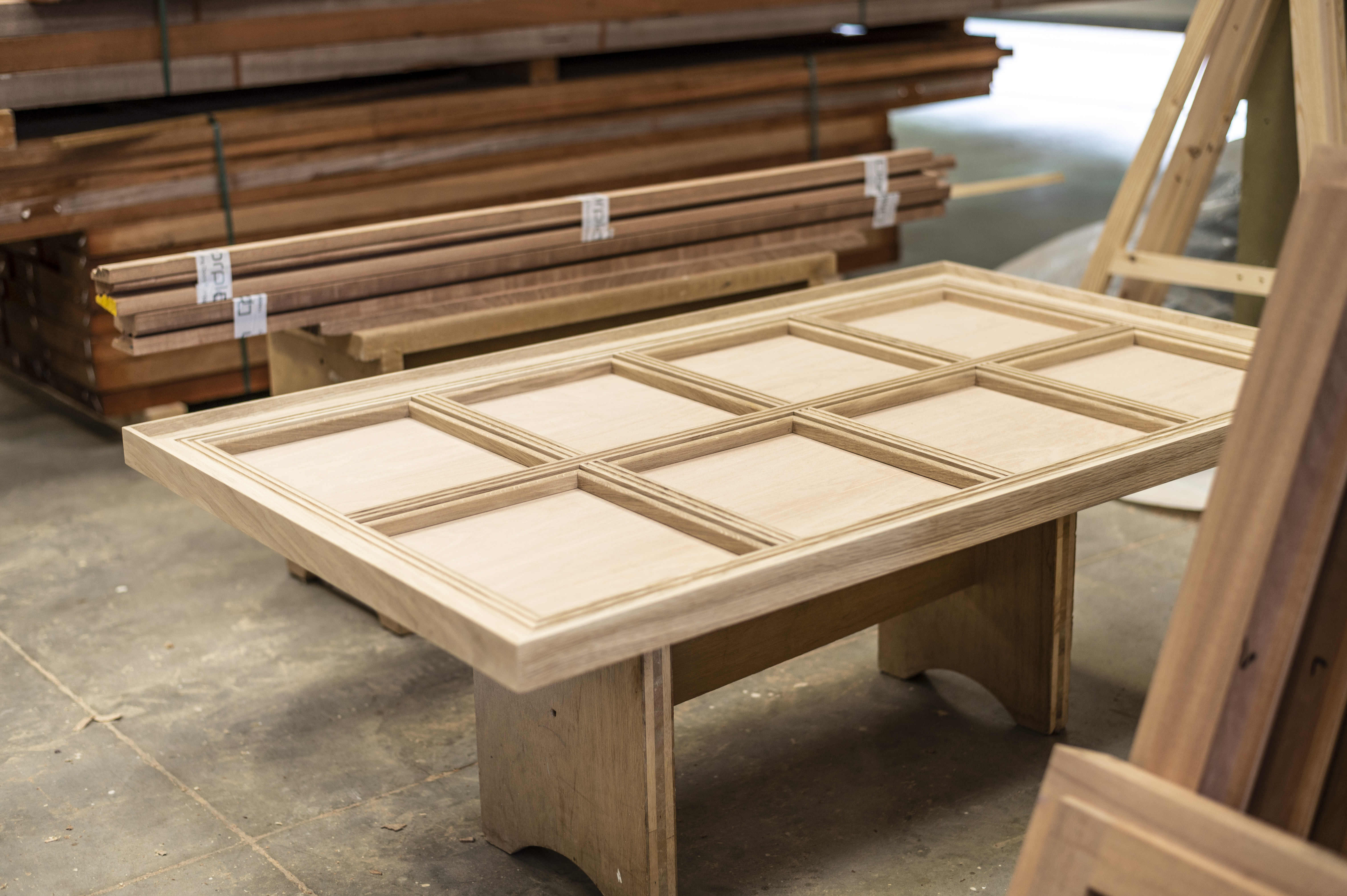

Creating homes of enduring quality and working to minimise our environmental impacts.
REDUCING OUR CARBON EMISSIONS
Responding to the climate crisis is our highest environmental priority and our primary focus is to decarbonise our business across the whole value chain. We have set an ambitious commitment to achieve science-based net-zero emissions by no later than 2050 across our operations, the homes we build and the operations within our supply chain. This includes both direct and in-direct carbon emissions from scopes 1, 2 & 3. For more information, visit our webpage tackling the climate emergency.
Discover more

Certified environmental systems
From the design of our homes and developments, to the materials we purchase, the way we build and the information we give our customers on the use of their homes - we care about reducing our impact on the environment. We operate a system that ensures we manage these impacts in a systematic way and is certified by the British Standards Institute to the international standard ISO 14001:2015. All of our developments are subject to internal spot-checks on a regular basis, using a risk-based approach. Site visits and spot checks are undertaken by inspectors from the Health, Safety and Environment Department. Directors also undertake spot-checks and the outcomes of these assist with continuous improvement. View our ISO certificate here.


Promoting supply chain sustainability
We are partners in the Supply Chain Sustainability School, which is an award-winning initiative providing free learning and development to help our supply chain partners address sustainability issues. The School offers free practical support to all Redrow suppliers and subcontractors in the form of e-learning modules, training workshops and self-assessments. Since we became partners with the school, over 4,700 free resources have been accessed by more than 300 Redrow suppliers. We encourage our supply chain to improve their knowledge and understanding of sustainability issues through the School's programmes and also sit on the Homes Leadership Group and Carbon and Waste Special Interest Groups, supporting the development of the School.
MINIMUM SUSTAINABILITY STANDARDS
Our group-wide design standards apply to all our homes and go beyond regulations and material sustainability standards in many instances. For example to minimise sound impacts we use of robust Standard Details which exceed Building Regulaton requirements by 3 dB. All windows are 1.2U-Value and all doors are 1.0 U-value. All floors are 0.12max U-value. All roofs are 0.11 U-value: all improvements upon standard requirements. Our homes are designed for improved daylighting and solar gains by adding larger than standard patio doors and windows.
We worked with the Wildlife Trust to develop and implement a pioneering new approach to enhancing biodiversity on our developments. We are developing a net gain approach to biodiversity; ensuring nature is enhanced as a result of our activities and people can access and enjoy nature in their daily lives. We incorporate Sustainable Urban Drainage schemes on all of our developments to manage flood risk, which also often provide habitats for wildlife.
Redrow standard specification includes low embodied carbon products such as use of innovative interlocking concrete tiles, aircrete concrete blocks with up to 80% of the raw materials used in the manufacture being recycled products, locally recycled aggregates.
Responsibly sourced timber
The world’s forests provide a home to more than 50% of land-dwelling animals, plants and insects (source: WWF) and are key to regulating the global climate as they absorb large amounts of carbon from the atmosphere. For the last 15 years, we’ve promoted responsible forest management and sought to eliminate illegal timber in our supply chain.
Our Sustainable Timber Procurement Policy commits us and our supply chain to only source certified timber from sustainably managed forests, through Forest Stewardship Council (FSC) and The Programme for the Endorsement of Forest Certification (PEFC) schemes. Operations managed to FSC standards protect the trees, habitats, biodiversity and the local people from corruptive dealership and landownership.
We ask all suppliers and subcontractors to complete a timber proforma, where they need to describe the type of timber supplied, species, origin of country and certification scheme. For each certification number (FSC / PEFC etc) referenced on the proforma, a matching certificate, invoice and delivery note must be provided in order to complete the submission.
This year, 99.98% of our timber was certified to these standards and our target remains at 100%. This figure has been independently verified by an external organisation and is included in our ESG Scorecard within our Annual Report here.
We submit to the CDP Forests Programme to maintain transparency in our reporting and support our aim of becoming an industry leader in this field. In the most recent submission, we were awarded a C grade (2021) and we’re now reviewing the scoring, to see where we can improve.

99.9% of our timber is responsibly sourced
Reducing waste
Reducing the amount of construction waste we produce is important for several reasons. Producing raw materials and manufacturing and distributing products contributes to our scope 3 emissions, which we’re committed to cutting. Sending waste to landfill also has cost implications for us, so we look to divert as much as possible from landfill and reuse or recycle waste. We’ve developed a waste and resource efficiency strategy to guide us towards a concept of total waste management, with waste prevention and reduction at its core, view our strategy here. In addition to reducing our own waste production, we provide our customers with information on how they can reduce their own waste and recycle responsibly.
WASTE RESEARCH PROJECT
In 2021, we concluded ‘Reduce the Rubble’ – a pioneering waste research project that sought to drill-down and identify every component of the waste generated during our build process. The research helped us to better understand the root-causes of waste and identify how it might either be eliminated, reduced or re-used.
More than thirty opportunities for improvement were identified and we established a Buildability and Waste working group to help us make progress on these. The group meets regularly to develop ways to design/build smarter and faster, while reducing the waste we produce and protecting what makes our homes special.
We've introduced a number of changes to design-out waste, including reducing ground floor storey heights by one course of brickwork, which reduces wasteful offcuts while still having the highest floor to ceiling heights in the industry. We have also removed complicated design features that produce waste and don’t add value to our homes. These include changes made to understairs cupboards, sloping ceilings, wardrobes and stud walls.
The communication campaign around Reduce the Rubble helped to raise awareness of waste and it has had a positive influence on the way in which our construction teams think about waste. A survey found that 96% of construction workers involved in the project are now actively working to reduce waste.
The project won bronze at the Global Good Awards in the category of Waste Reduction and Minimisation. The project report is published here and you can also find out more in the video below.
Supporting the Circular Economy
Redrow supports the rise of the circular economy, where materials are reused or recycled at the end of a product’s life, rather than being disposed of. This helps to tackle global challenges such as climate change, biodiversity loss, waste and pollution. As resources become ever more difficult and expensive to access, it’s becoming critical to find alternative ways of sourcing and reusing materials effectively. That’s why we’re building a culture of reuse across the business, with 98% of our construction waste being diverted from landfill in the last financial year.
Our work with the Community Wood Recycling Scheme and the Crown Can Back scheme are examples of our support for the circular economy. On site, we also segregate and crush inert waste, including concrete and rubble generated during demolition and construction. We then test and reuse the by-product, to reduce the amount of waste sent to landfill, conserve energy and prevent greenhouse gas emissions.
In 2021, a large material recovery operation took place at our Allerton Gardens development in Liverpool, which saw more than 1,400 tonnes of inert waste material processed into recycled by-product. The site had generated a large amount of concrete waste due to the removal of an existing road, which was underpinned with concrete slabs. The slabs were crushed during a six-day long recovery operation. After testing the by-product to ensure it was suitable quality, we used it across the development, creating driveways, paths and patios.
Using recycled aggregates in construction has numerous benefits, including:
• reducing demand for primary resources and virgin raw materials
• carbon emissions savings, due to reduced material transportation
• cost savings, as we don’t have to purchase and import new materials.

Recycling and Reuse
More than 98% of our construction waste was diverted from landfill in the last financial year. We have recycling schemes in place for some of our product/material packaging, including pallets and paint-cans. We have also been working in partnership with the Community Wood Recycling Scheme for more than 5 years, to recycle and recover waste timber from our sites. The Community Wood Recycling Scheme is a national network which provides a collection service for excess wood, with the aim of saving resources by reusing and recycling waste timber. The Scheme also operates as a social enterprise, creating opportunities for local people.
In 2022, 485 tonnes of wood was collected from Redrow sites and rescued from the waste stream, a breakdown of this can be seen below.

Strategy in action recycling & reuse
We currently recycle over 97% of our waste across the business. At Colindale Gardens, London, 16 unused buildings were demolished to make way for new homes to be built. All the materials from the demolition process were separated with c.5,000 tonnes of metal recycled and 61,000 cubic metres of concrete crushed and reused on site as aggregates.

Water management
A recent report from the Public Accounts Committee shows that England is likely to face significant water shortages within the next two decades as the population grows, urbanisation continues and the climate warms. We’re looking at how we can help. Our homes are already industry-leading in terms of water efficiency, with a rating of just [105] litres per person per day, well below the Building Regulations requirement of [125] l/p/d. We achieve this with highly efficient fixtures, water saving baths and flow restrictors. In 2022, 148,945 m³ of water was consumed across Redrow sites, plots, offices and showhomes. This is equivalent to 26.5m³ of water consumed per 100m2 of build, view our ESG Scorecard to see how this compares to previous years.
We also incorporate Sustainable Urban Drainage schemes (SUDS) on the majority of our developments to improve rainwater management and reduce flood risk. SUDS Systems are designed to mimic the natural drainage of surface water by managing rainfall, whilst also often providing habitats for wildlife. We have also developed plans for Rain Water Gardens at our Queenshill site in Newport, South Wales. The SUD’s features on site will be comprised of one combined crate tank and attenuation basin to the south of the site - landscaped for aesthetic purposes with a mixture of scrub, trees and wildflower planting – permeable / porous paving, swale features and road-side rain garden and filter strips. In terms of placemaking, it is hoped that the end result will prove to be an attractive, greener site. Additionally, having trees as part of the rainwater garden features also helps improve run off.

Materials with recycled content
Using more reclaimed and recycled material in construction is a powerful way of diverting materials from landfill and limiting the depletion of finite resources.
We have gathered data from our suppliers and calculated that approximately 11% of materials used in a standard Oxford house type contain recycled content. The materials that have the highest proportion of recycled content are:
- steel lintels (86%)
- aircrete blocks (80%)
- facing bricks (10%)
- plaster products (9.75%)
- piping within drainage goods (50%)
The percentages in brackets are that of the recycled content within each of the elements.
We will continue to measure this annually and to work with our supply chain to increase materials containing recycled content – which will reduce both embodied carbon and our reliance on raw materials.
Our commitments
Find out about our commitments to the environment and how we're progressing here
Find out more





